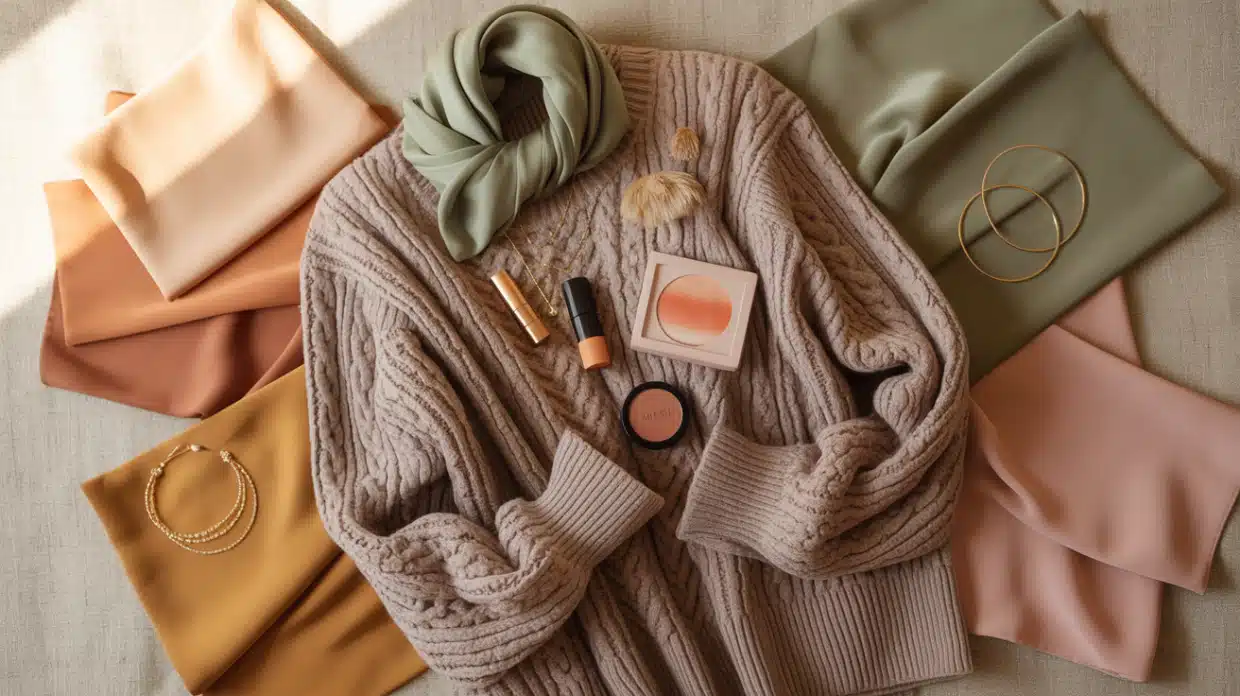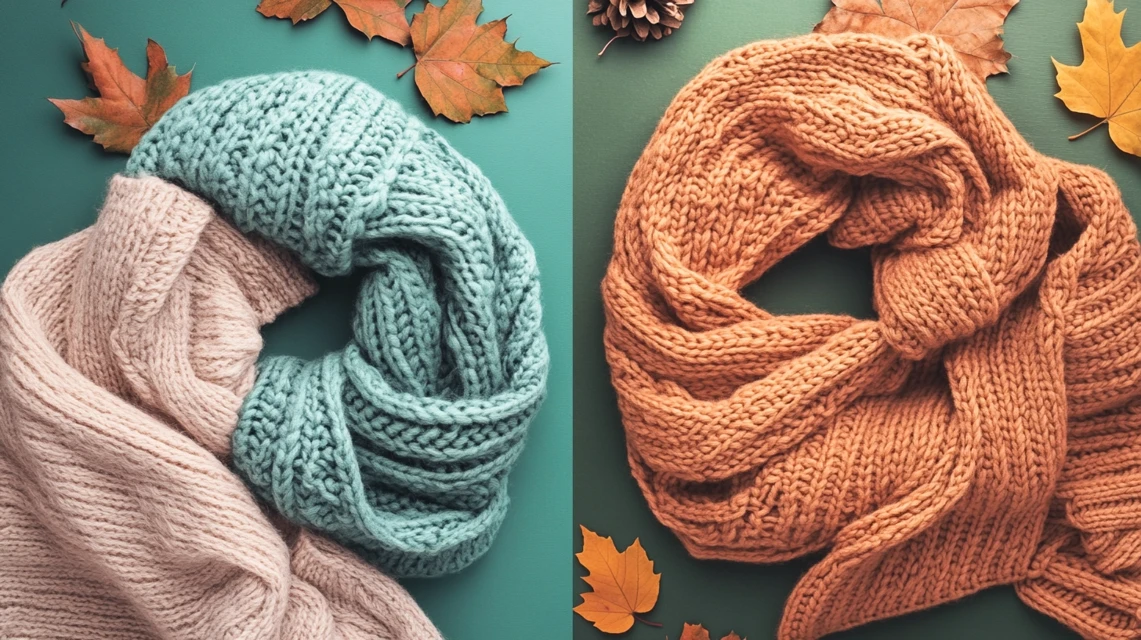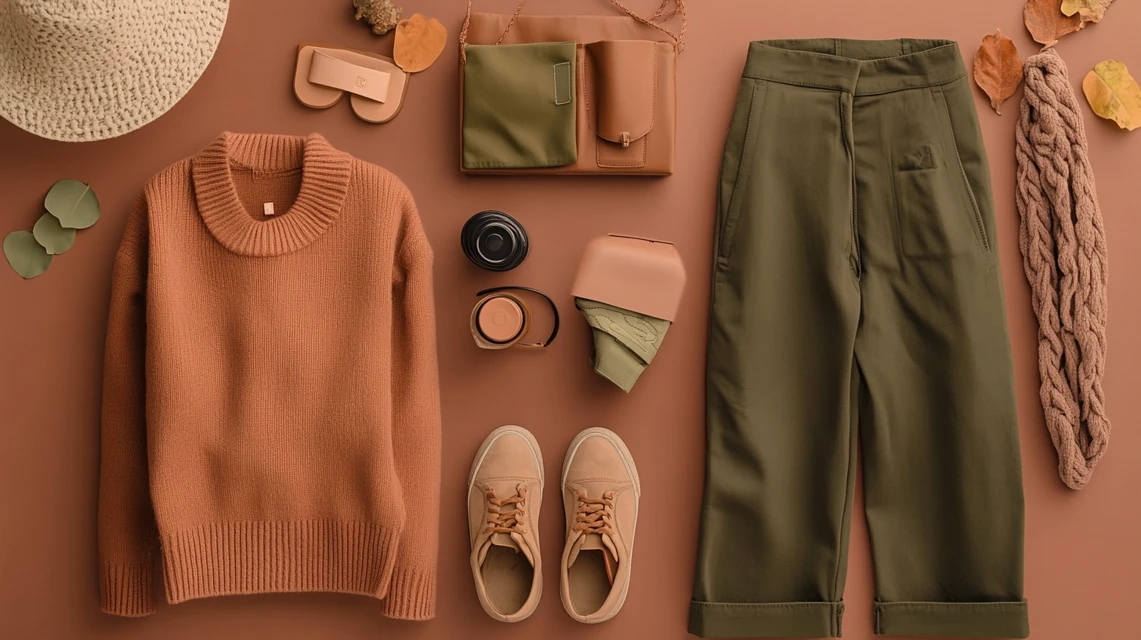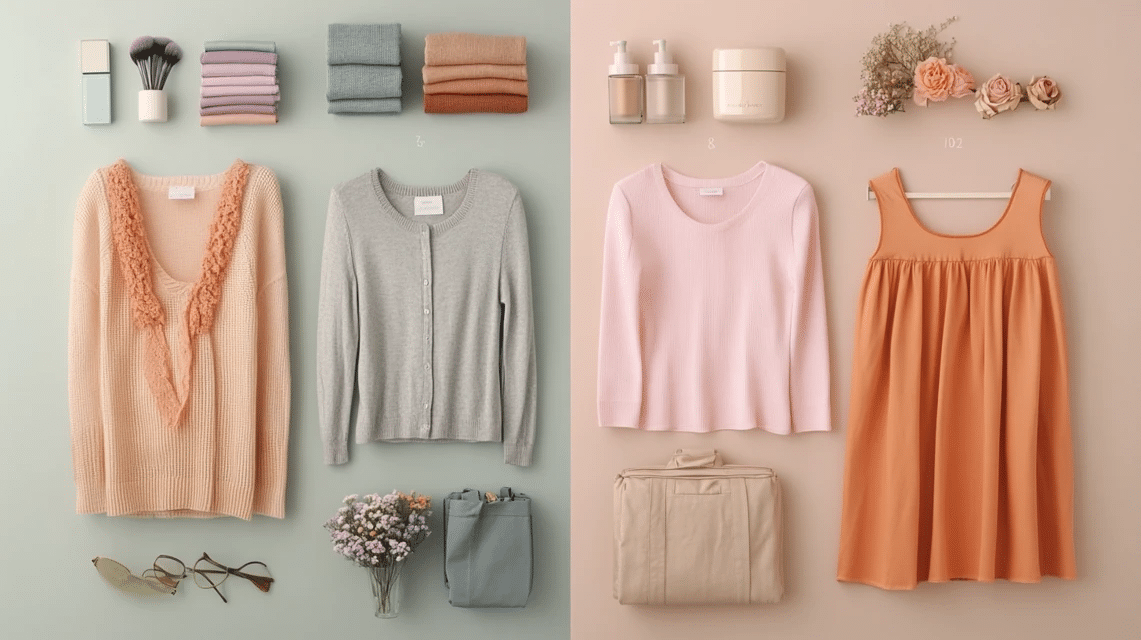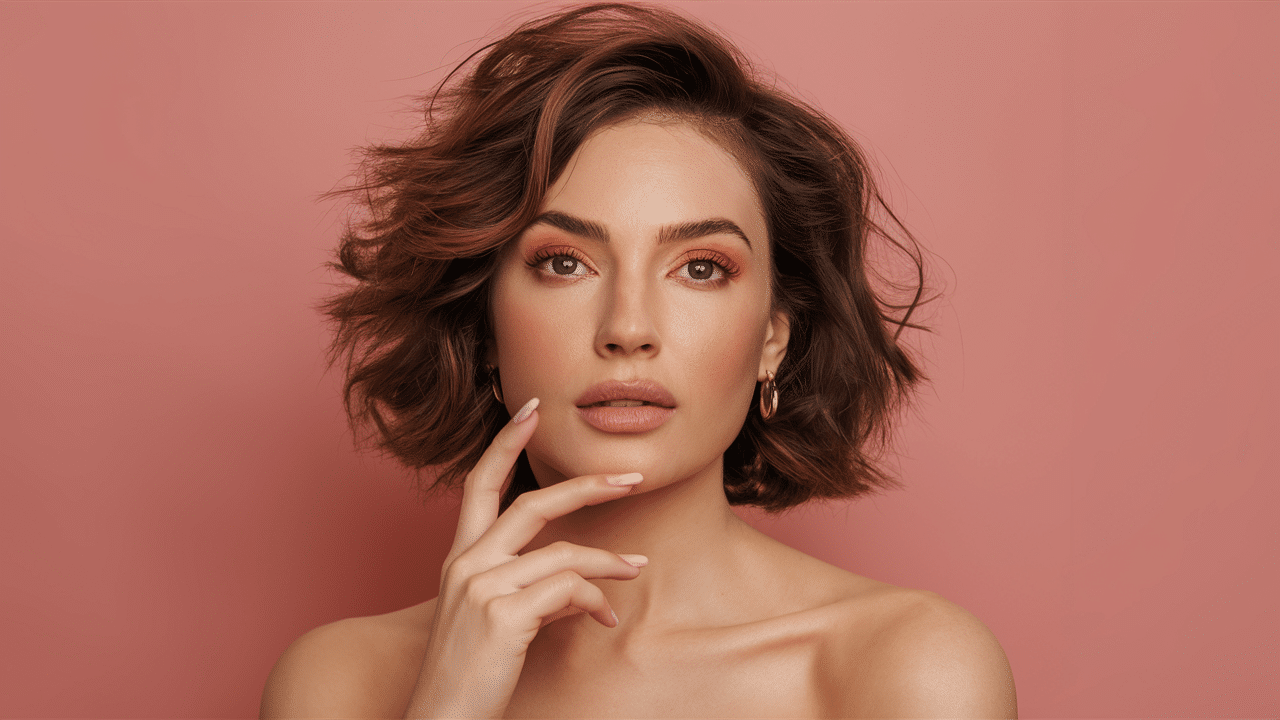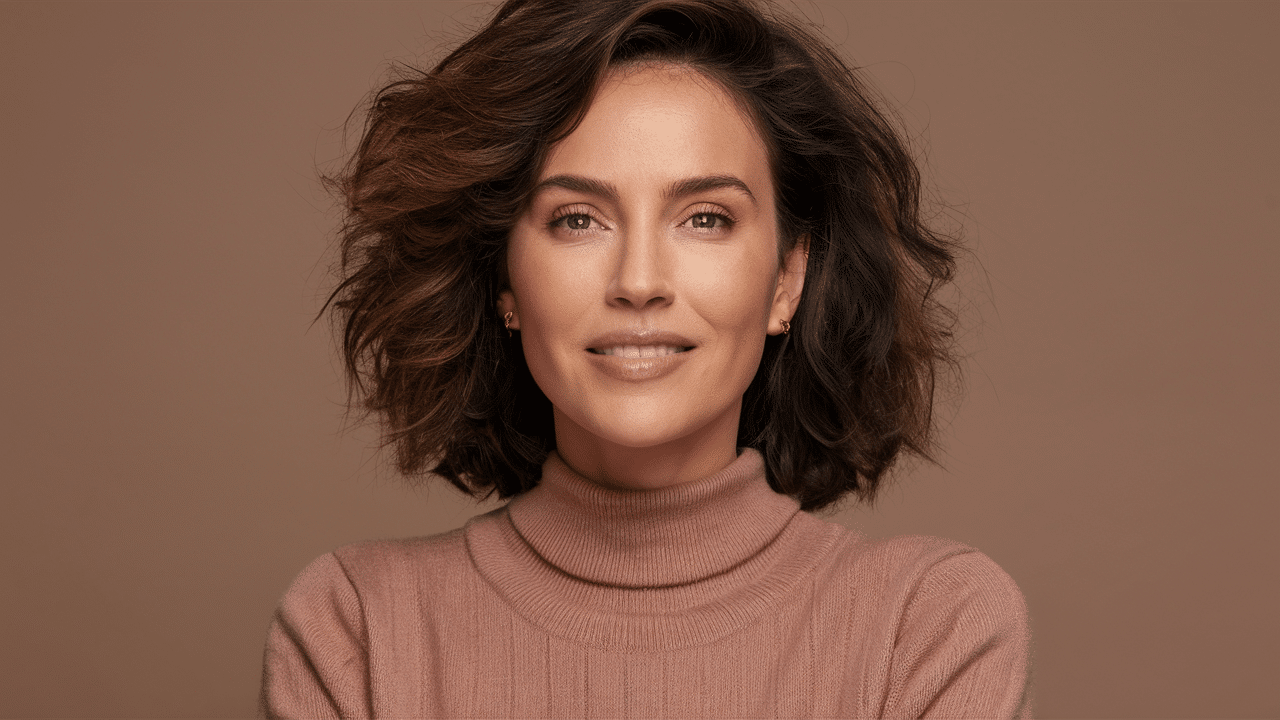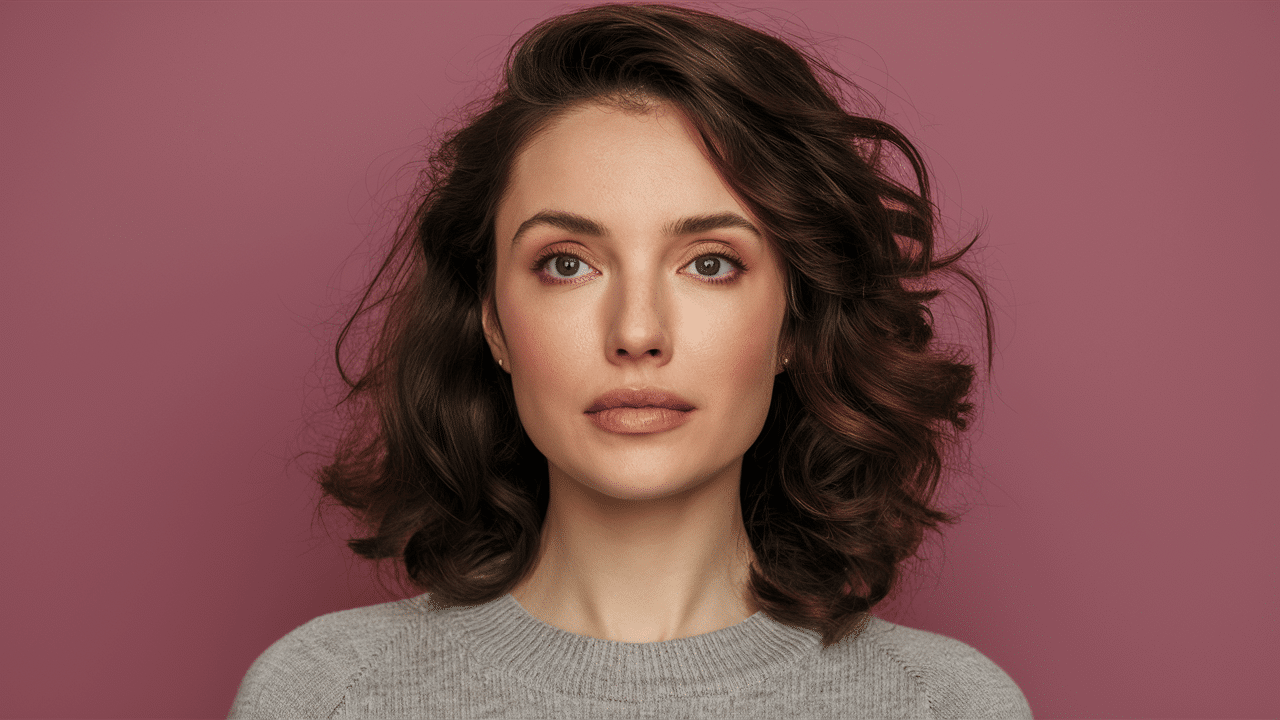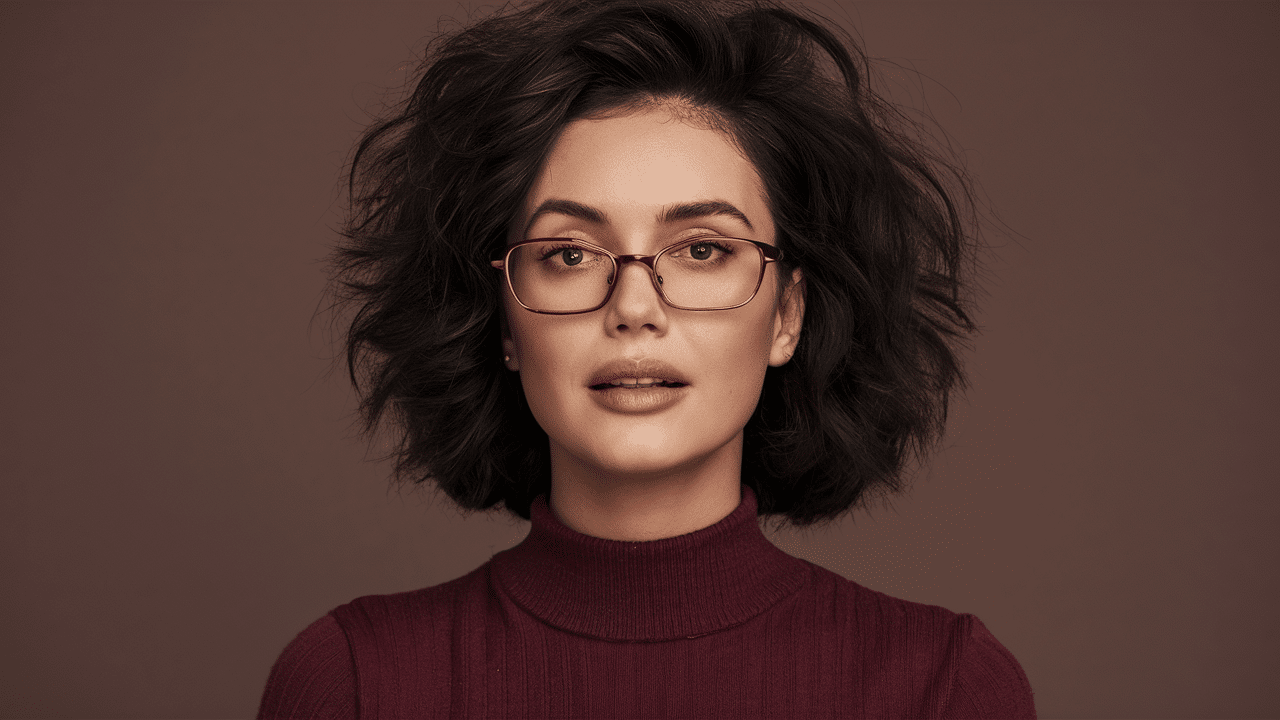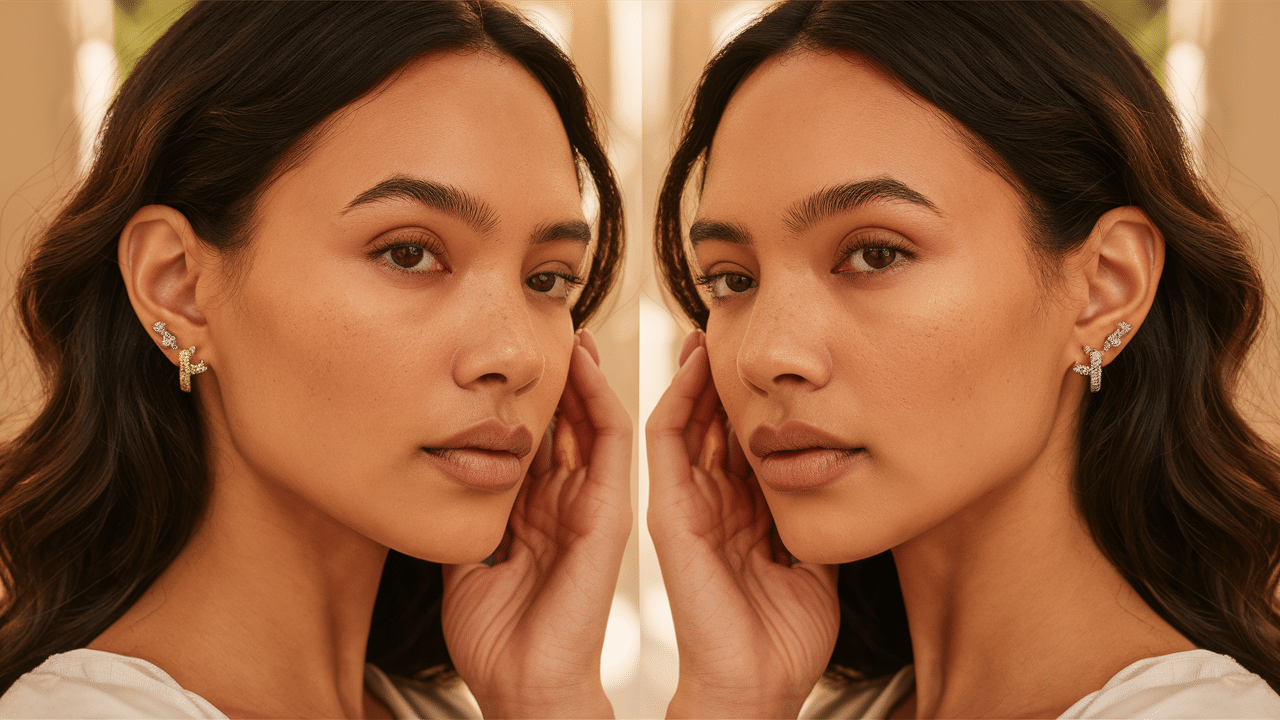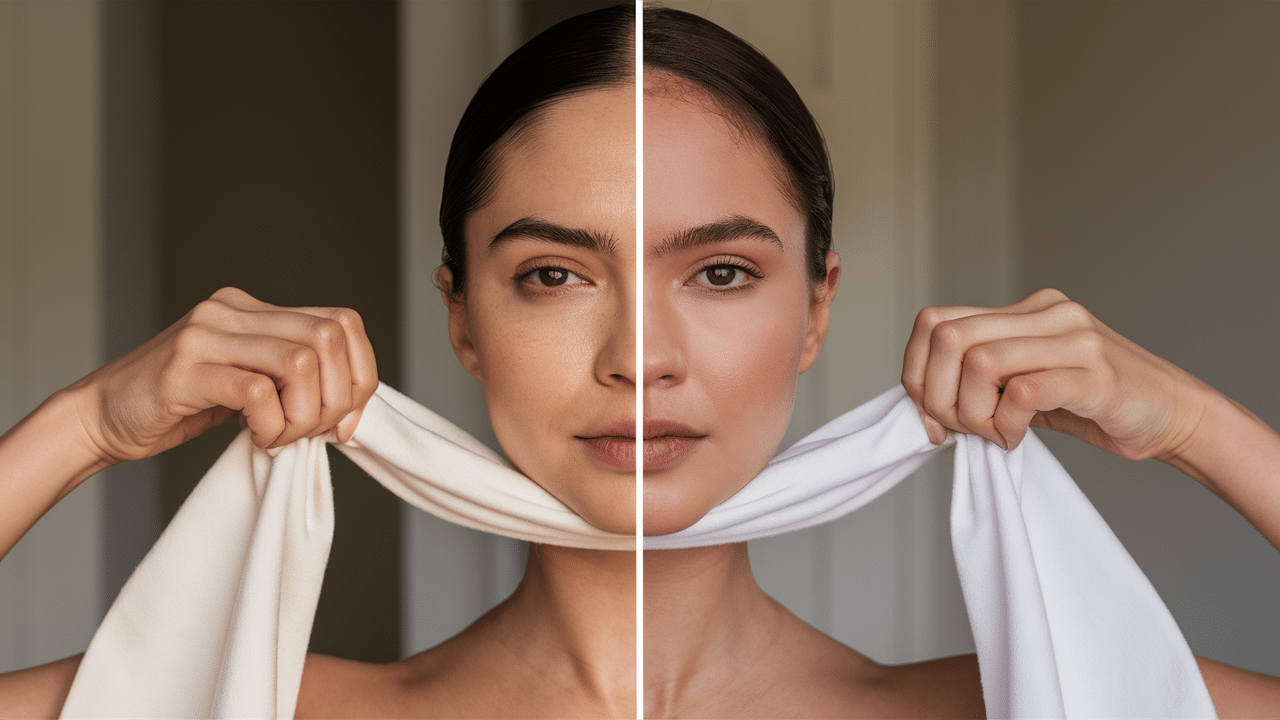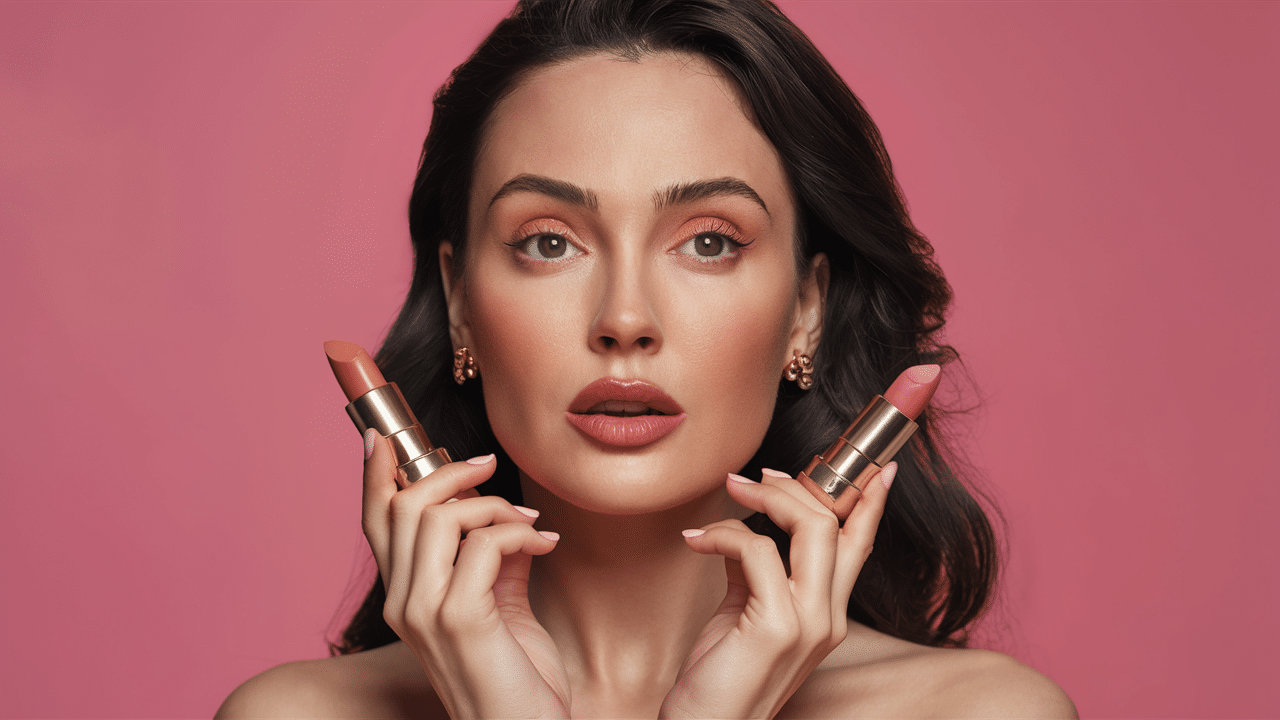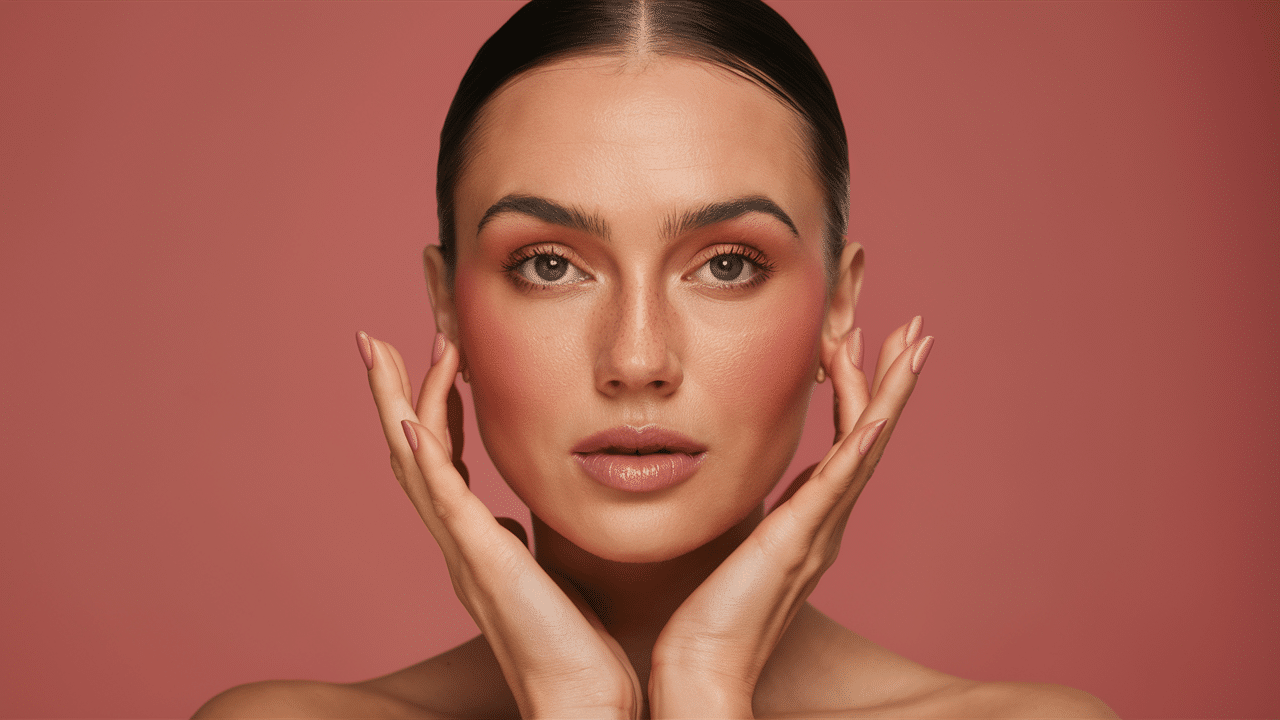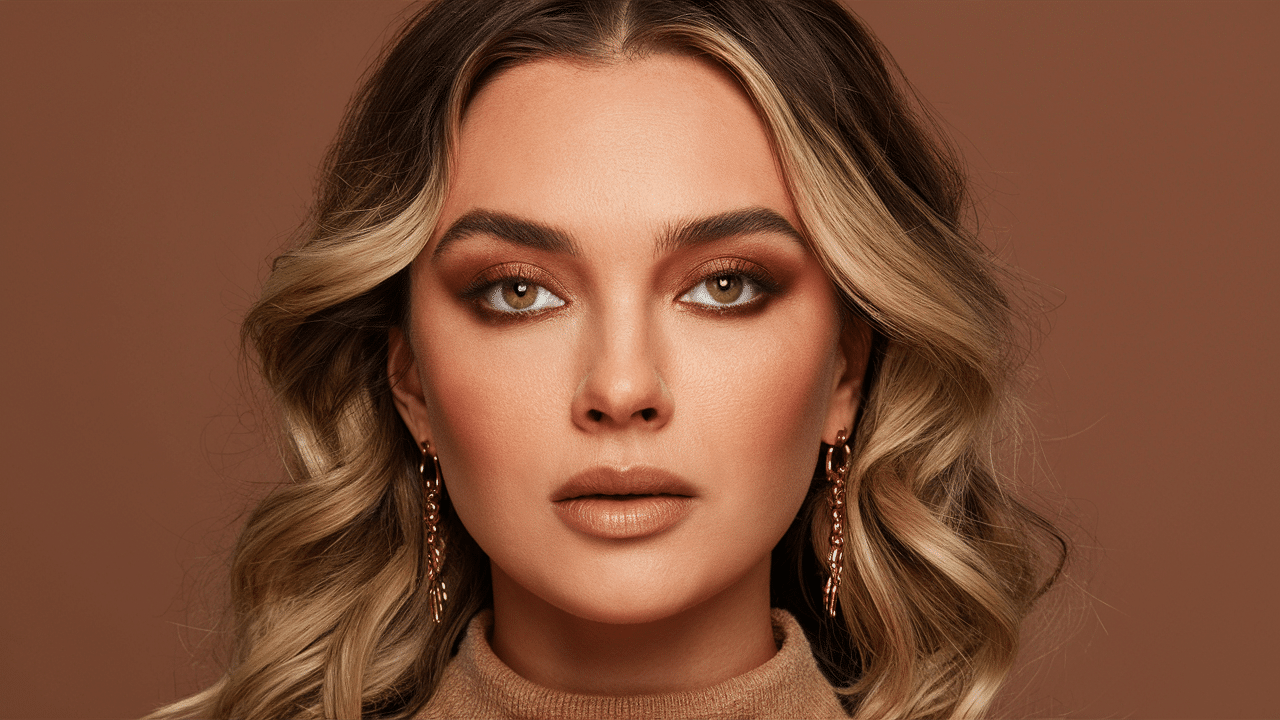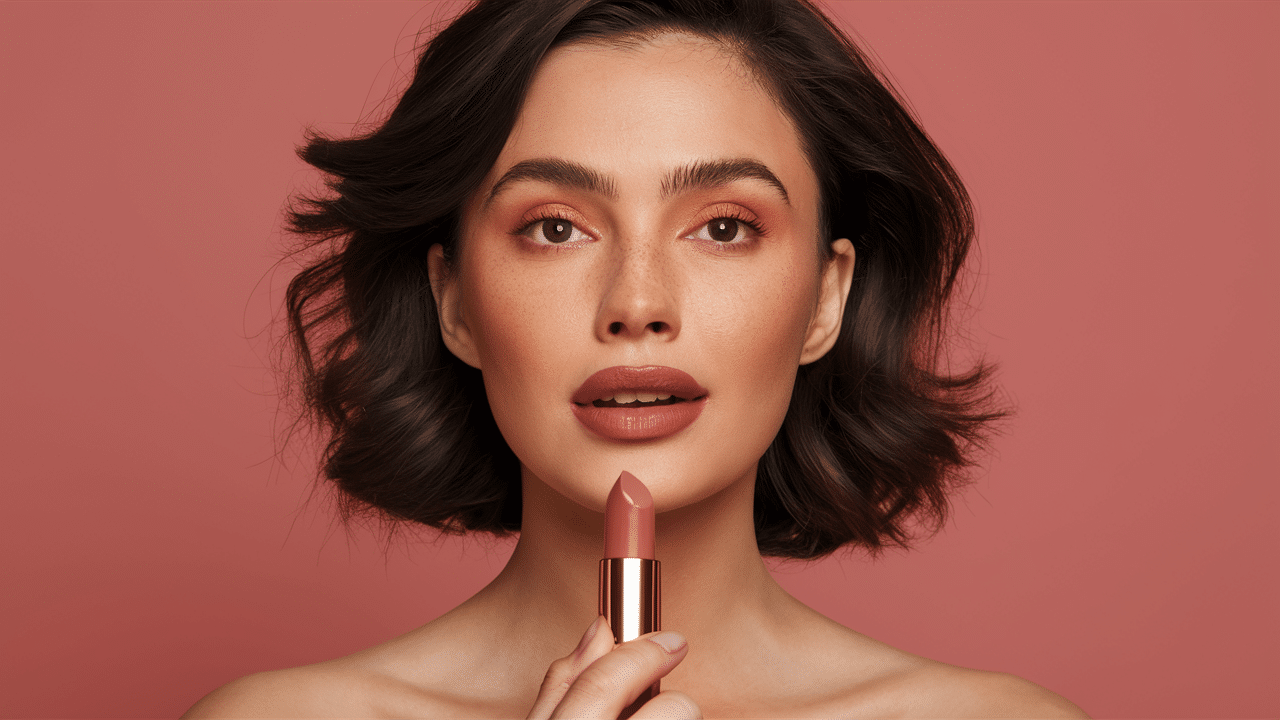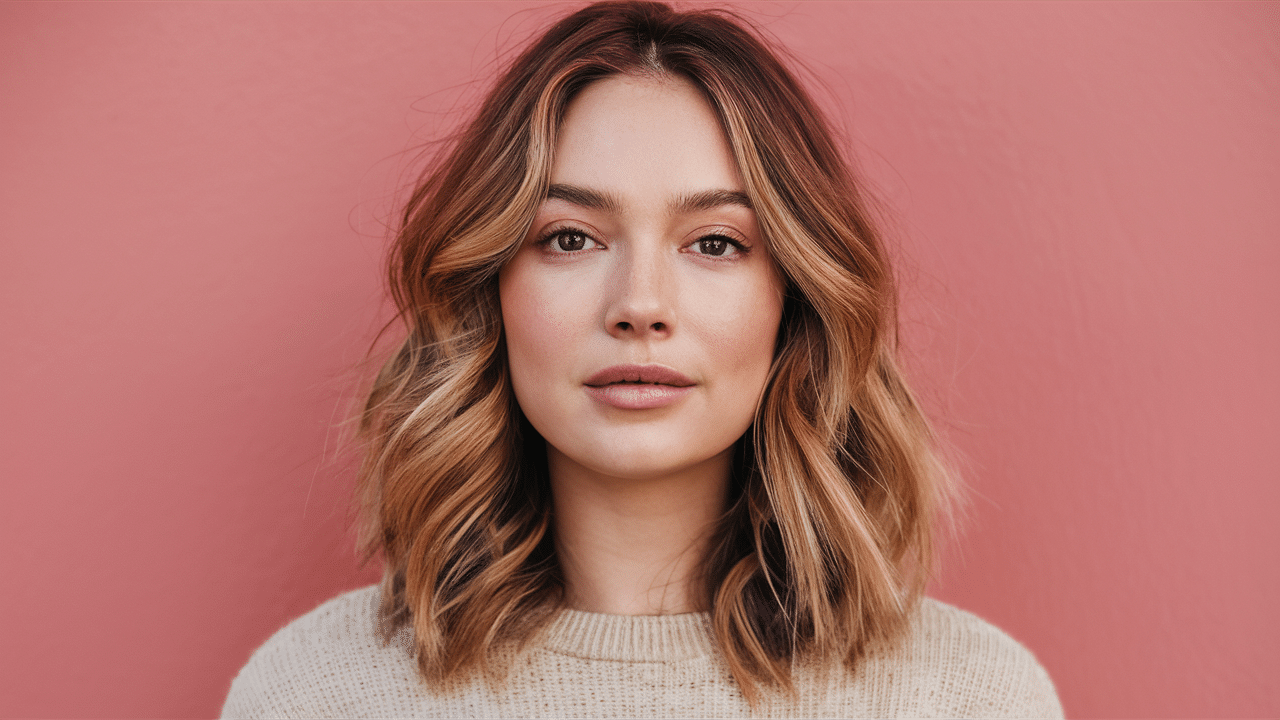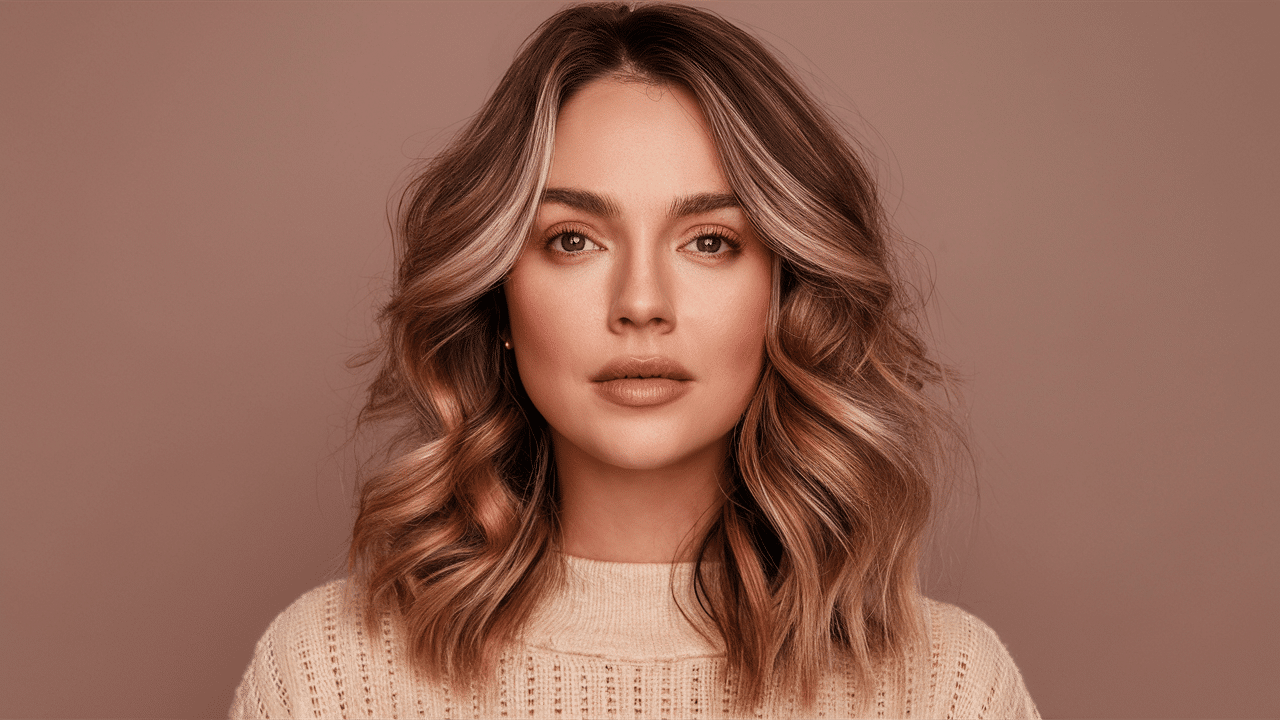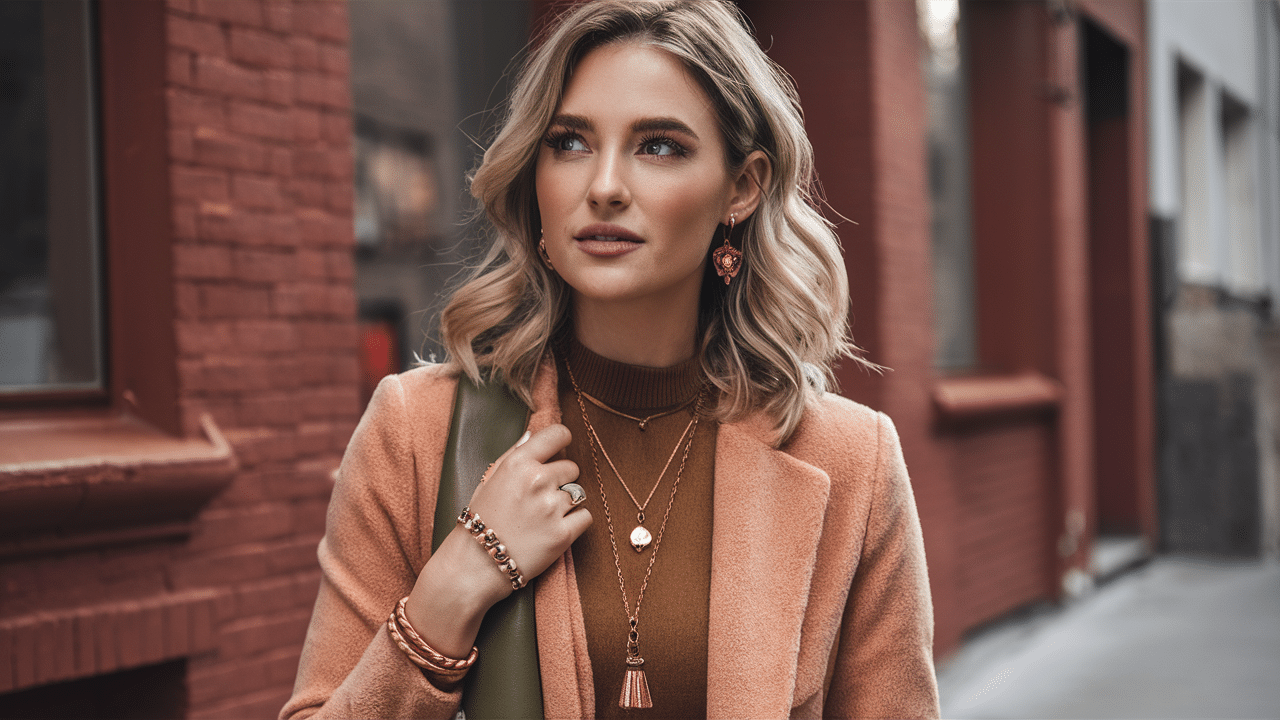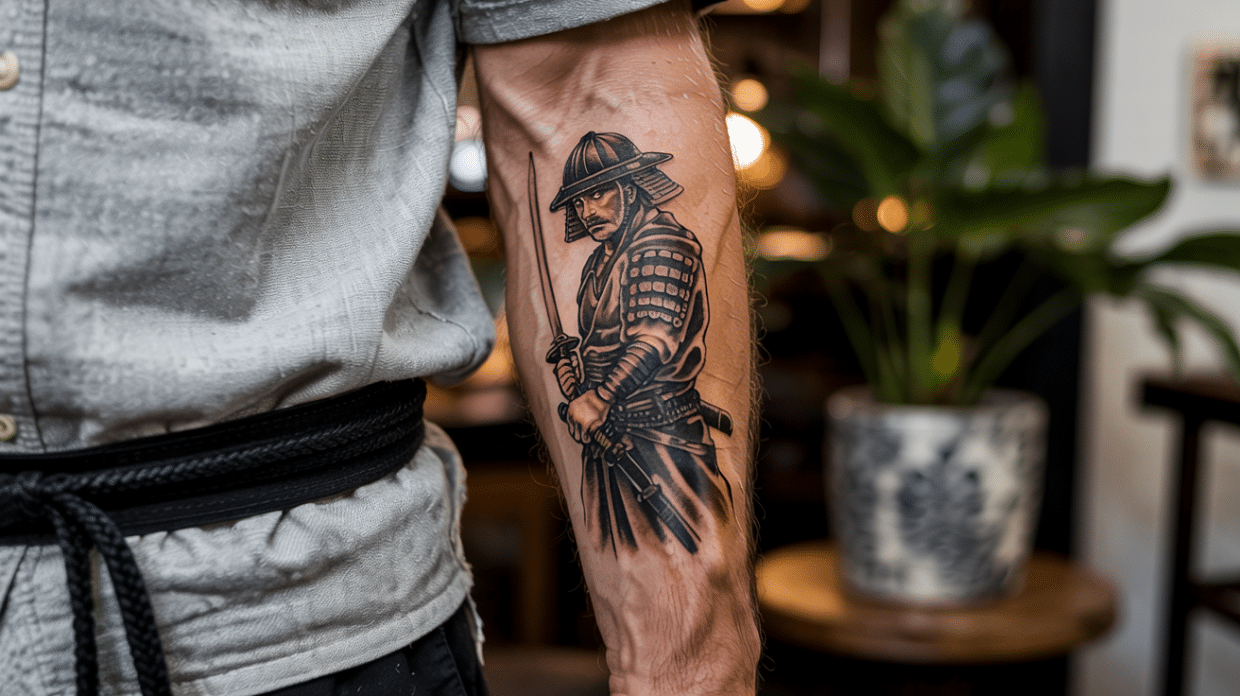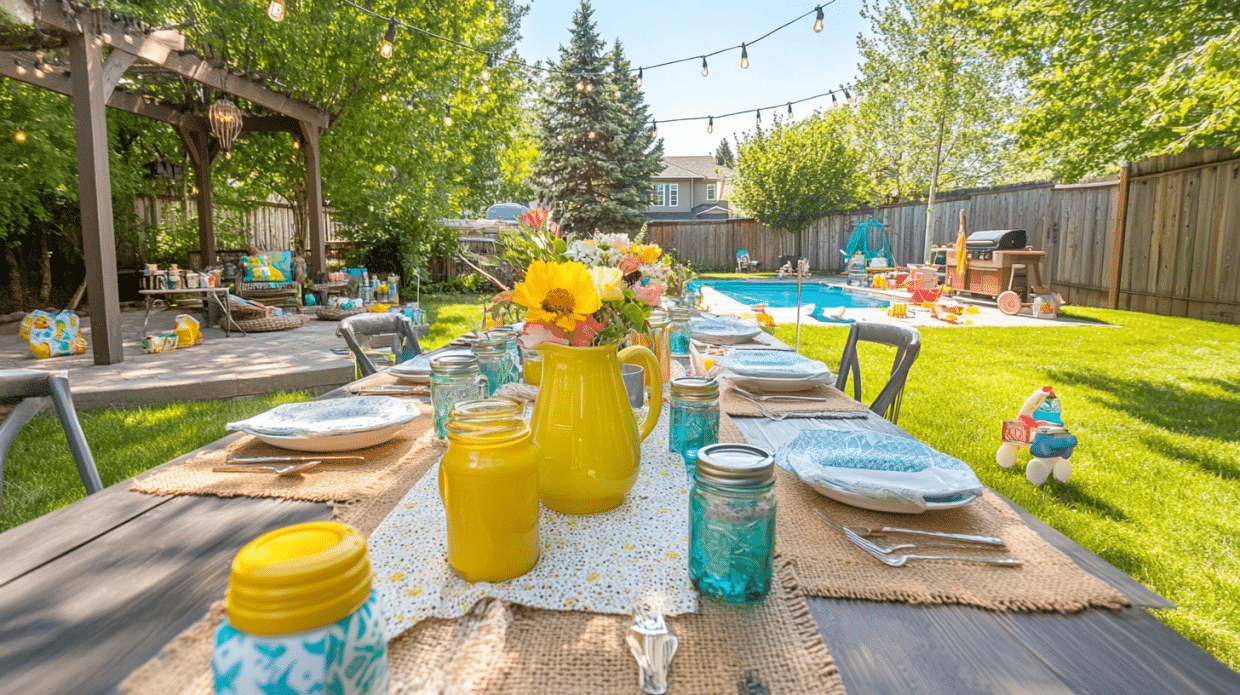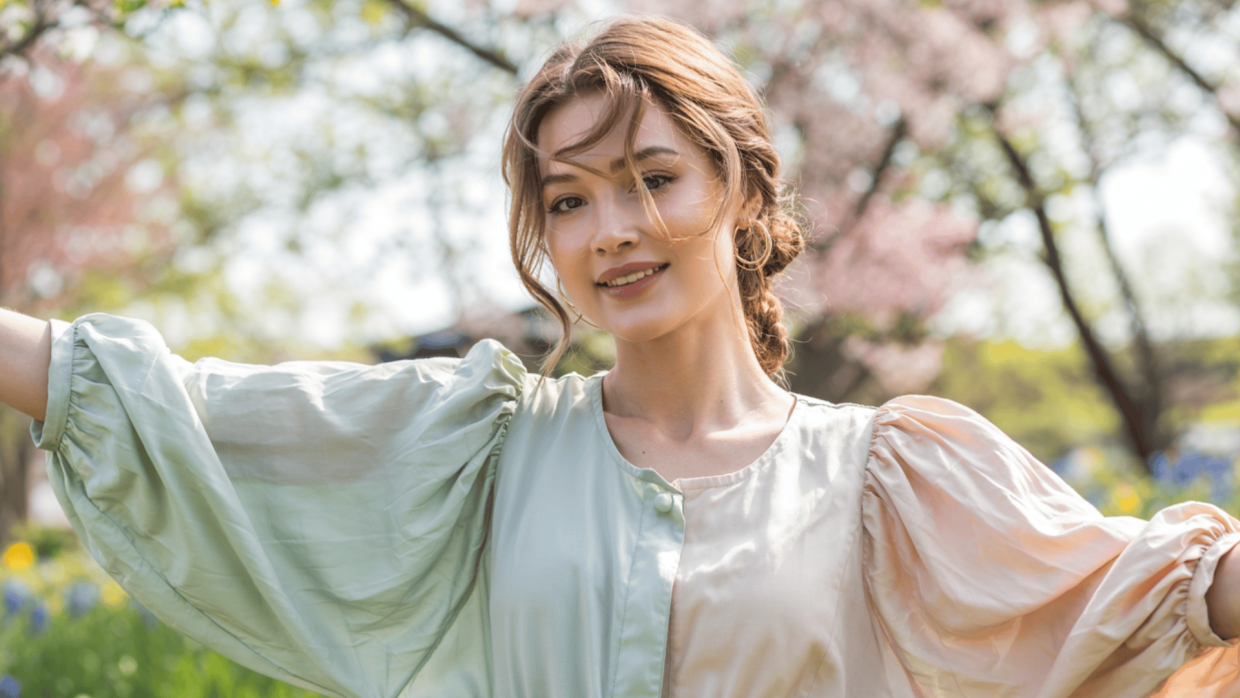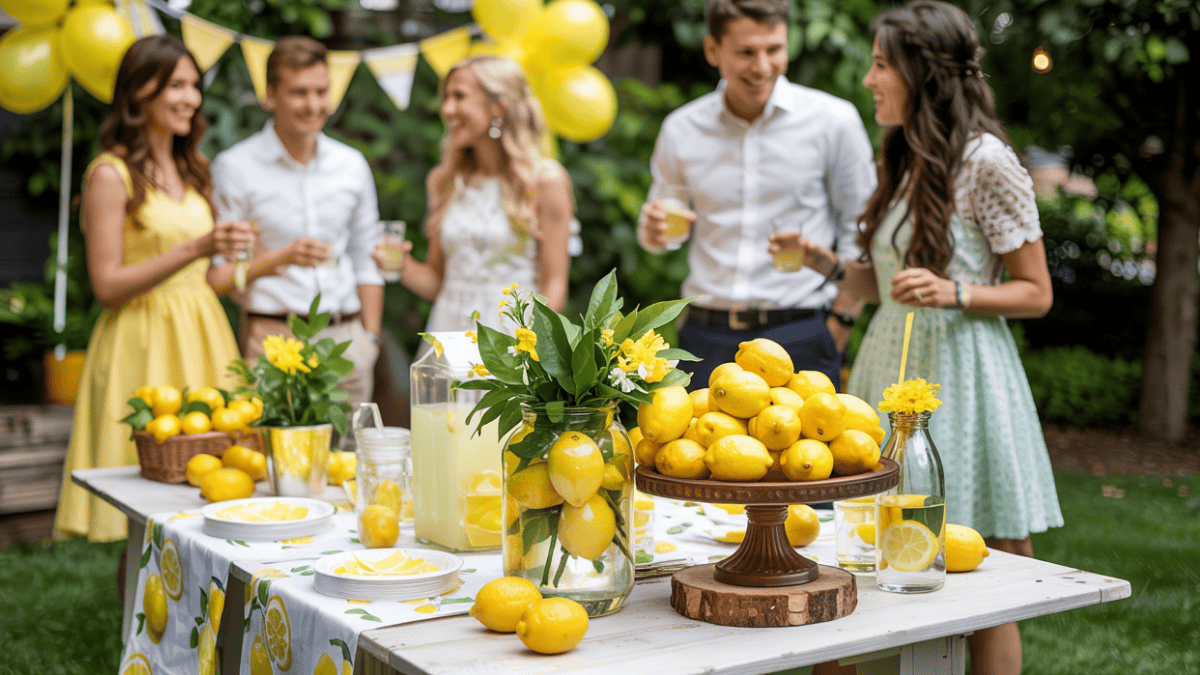Have you ever put on a color that made your skin glow or your eyes stand out, while others made you feel washed out or dull?
The answer might be your seasonal color type. If you’ve been told you’re a Soft Autumn or think you might be, this guide will help you understand what that means.
The Soft Autumn color palette is warm, muted, and earthy, making it perfect for individuals with soft features and low contrast.
This blog will show you how to tell if you’re a Soft Autumn, what colors suit you best, and how to dress, choose makeup, and style your look to match your natural tones. Are you wondering if Soft Autumn is the right fit for you? Let’s find out together.
What Is a Soft Autumn Color Palette?
Soft Autumn is a gentle color season that sits between Summer and Autumn. It blends warm undertones with muted, earthy colors that feel soft and natural.
These shades aren’t too dark or too bright, they’re quiet and calming. Common colors include soft peach, moss green, and warm taupe. If bold colors overwhelm your features, Soft Autumn’s soft warmth might suit you best.
Defining Features
Soft Autumn is known for its colors that evoke a quiet and calm atmosphere. These shades are warm but muted, not loud or bright.
Think of faded fall leaves, soft clay, or dry grass, colors with a golden base but without strong contrast. Most Soft Autumn tones have a slightly dusty look.
They blend in instead of standing out. This season works best for people who glow in warm, soft, and natural colors that don’t pull too much focus.
How It Differs from Other Autumn Types
Soft Autumn may share traits with other autumn types, but it lacks the depth and intensity of other autumn types. True Autumn and Deep Autumn both lean into darker or richer tones.
Soft Autumn remains light, muted, and low-contrast. It works better for people who need softer, more blended shades. Let’s look at the key differences between Soft Autumn and other autumn sub-seasons.
Soft Autumn vs. True Autumn
True Autumn colors are deeper, richer, and more intense than Soft Autumn shades. They include bold tones like pumpkin orange, forest green, and golden brown.
These colors have a heavy warmth and can feel too strong on someone with softer features. Soft Autumn, in contrast, feels lighter and more toned down.
If bold autumn colors make your face look dull or tired, Soft Autumn’s subtle tones will create a more balanced and gentle appearance.
Soft Autumn vs. Deep Autumn
Deep Autumn has more darkness and contrast. The colors are bold and can include dark olive, black-brown, and deep rust. This palette works well for individuals with dark hair, deep-set eyes, and strong facial features.
Soft Autumn colors are not as heavy; they include medium shades of green, peach, and brown that blend more easily. If dark colors feel too harsh or make you look shadowed, Soft Autumn is a softer, more natural match.
Soft Autumn vs. Soft Summer
Soft Autumn and Soft Summer are both characterized by low contrast and muted colors, but the primary difference lies in their temperature. Soft Autumn is warm, while Soft Summer is cool.
Soft Summer colors have a bluish base, like dusty rose or misty gray. Soft Autumn has a golden glow, evident in colors such as camel, olive, and coral pink.
If cool-toned colors make your skin look pale or gray, and warm tones bring you to life, you’re likely a Soft Autumn.
Soft Autumn Color Palette Variations
Not everyone fits into one perfect version of Soft Autumn. While Soft Autumn isn’t always split into subtypes like Winter, there are some common variations.
These shifts can help explain why some Soft Autumns look better in lighter colors, while others need deeper or smokier shades. Knowing your variation enables you to choose colors that work better for your features and personal style.
1. Muted Light Autumn
Muted Light Autumns fall on the lighter end of the Soft Autumn range. Their features are soft and slightly warm, but they also lean toward lightness.
The best colors for this group include soft ivory, light peach, warm beige, and faded coral. These shades are gentle and glow nicely on fair skin tones.
If darker autumn colors feel too heavy or drain your skin tone, the light and muted side of Soft Autumn may suit you best.
2. Classic Soft Autumn
Classic Soft Autumns closely match the standard palette. They have warm undertones, gentle features, and medium contrast. Their best colors include soft moss green, warm taupe, dusty rose, and muted gold.
These shades don’t overpower their natural look. This group tends to do well with balanced outfits, nothing too dark, light, or sharp.
If most of the core Soft Autumn colors look good on you, you likely belong to this classic version of the season.
3. Soft Autumn with Neutral Influence
This variation lies near the center of the seasonal color wheel. People in this group may have both warm and neutral traits.
Some cooler, Soft Autumn colors, such as soft plum or mushroom gray, might also look good on them. These individuals often feel stuck between the Soft Autumn and Soft Summer seasons.
If you find that both warm and neutral tones work okay, but not the brightest or deepest shades, this softer, balanced version might be your best fit.
4. Smokey Autumn Variant
The Smokey Autumn type pairs best with deep, earthy colors that retain a muted quality. Think dark olive, warm charcoal, and brownish plum.
This group may have more contrast in their features, but still doesn’t do well with loud or bold colors.
Smokey Autumns wear deep, dusty tones that feel cozy and rich without being too dark. If light colors wash you out but strong ones are too much, this deeper version may be your match.
How to Tell If You Are a Soft Autumn
Are you unsure if Soft Autumn is your season? Begin by examining your natural features, including your skin tone, eye color, and hair shade. Soft Autumns often have warm undertones and gentle coloring.
You can also try a few easy tests at home using everyday items, such as clothing, makeup, and jewelry. These clues will help you see which colors make your features stand out and which ones don’t work as well.
Key Physical Features
Individuals with a soft autumn complexion often possess a natural, balanced appearance. Nothing feels too sharp or high-contrast. Their skin, eyes, and hair blend seamlessly. If you feel more at home in soft, warm tones, these traits may sound familiar to you.
- Skin: Warm undertones, often light to medium in depth. It can appear beige, peachy, or a soft golden hue.
- Eyes: Green, hazel, soft brown, or muted blue with a gentle look and low contrast.
- Hair: Light brown, mousy blonde, or warm chestnut with golden or neutral tones.
- Overall contrast: Features appear soft and blended, not sharp or bold.
- Skin: Light to Medium Warm Skin, Beige or Neutral
Soft Autumn skin is usually warm with golden or peach undertones. It can range from light to medium in depth. The skin may look beige, ivory, soft tan, or peachy.
It doesn’t stand out in sharp contrast to your other features. If cool colors make your skin look pale, gray, or tired, but warm, soft tones like camel or peach bring a glow to your face, you likely have Soft Autumn skin.
Quick At-Home Tests
If you’re still unsure about your color season, you can do a few simple tests using items you already have at home. These quick checks can help you identify which undertones suit your skin best and assist in finding the perfect match.
You’ll test your response to different metals, fabric colors, and lipstick tones. Pay attention to how your skin, eyes, and overall look change with each option.
Gold vs. Silver Jewelry Test
Put on a gold necklace or earrings and look in the mirror. Then try silver. If gold makes your skin look healthier and gives you a soft glow, that’s a good sign you’re warm-toned like a Soft Autumn.
If silver makes you look pale or dull, it’s probably not your best match. Soft Autumns usually shine in warm metals like gold, bronze, or copper rather than cool, shiny silver.
These warm tones complement your natural coloring, rather than competing with it, which helps your face appear more alive and balanced.
Cream vs. White Fabric Test
Hold a cream-colored shirt or cloth under your chin. Then try one that is pure white. Cream has a soft, yellow base that works well on warm skin. Pure white is cool and sharp; it often works better on those with cool-toned skin.
If cream looks better on you and helps your skin look smooth and calm, you’re likely a Soft Autumn. If white makes you look tired or shadowed, it’s probably not your color.
The cream shade tends to blend in softly, while white may create a harsh contrast that highlights redness or unevenness.
Warm Peach vs. Cool Pink Lipstick Test
Try two different lipsticks: one peachy and warm, and one pink with a blue base. The peach lipstick should blend seamlessly with your skin, bringing out your natural warmth.
The cool pink may stand out too much or clash with your features. Soft Autumns usually look better in gentle, warm tones.
If the peach seems natural and the pink feels harsh or odd, you likely fall into the Soft Autumn color family. The right lipstick won’t just match your tone, it should also make your eyes look brighter and your skin more even.
Best Colors for Soft Autumn
Soft Autumn shines in gentle, earthy shades that blend well with warm, muted features. These colors aren’t loud or cool. Instead, they feel cozy and soft, like fall leaves, worn wood, and dry grasses.
The best colors sit in the middle of the spectrum, neither too dark nor too light. Selecting from this palette helps your skin glow, your eyes appear brighter, and your overall appearance feels smooth and natural.
Neutrals: Warm Taupe, Camel, Soft Brown, Off-White
Soft Autumn neutrals are warm, gentle, and smooth. They make great base colors for pants, jackets, and shoes. Camel and soft brown offer a cozy, earthy touch that blends well with other muted tones.
Warm taupe is great for layering, and off-white works better than sharp white; it’s softer and more natural. These colors help create easy outfits and don’t clash with your natural features, unlike cool or bright neutrals might.
Greens: Sage, Olive, Moss
Green is one of the best color groups for Soft Autumns. Sage is soft and light, olive adds a classic touch, and moss brings depth without being too dark.
All of these greens feature yellow or brown tones, lending them warmth and helping them blend seamlessly into the autumnal feel. These colors work great in shirts, dresses, or even accessories. They pair well with Soft Autumn’s neutrals for a peaceful, grounded look.
Accents: Soft Peach, Dusty Rose, Burnt Orange
Accent colors add life to your wardrobe without being bold. Soft Autumn accents are warm and quiet, never too loud.
Soft peach adds a touch of warmth to the face, dusty rose brings a gentle pink that works for blush or tops, and burnt orange gives a hint of fall energy without being too bright. These shades are great for scarves, lipsticks, tops, and details that brighten your look without clashing.
Avoid These Colors
While Soft Autumn looks great in warm, earthy tones, some colors can work against your natural features. These shades are often too sharp, bright, or cool, which can make your skin appear pale, tired, or unbalanced.
- Bright white – Too crisp and cold; it can wash out your skin.
- Jet black – Feels too heavy and sharp for your soft coloring.
- Neon colors – Way too bold and distracting for this gentle palette.
- Icy blue and pink – These cool, frosty tones clash with your warm skin.
- Cool gray – Often makes your features look dull or shadowed.
- True red or royal blue – High-contrast shades that overpower your muted tone.
When planning a Soft Autumn capsule, focus on warm, muted basics and earthy accents that mix easily. If you’re looking for outfit ideas that match this tone, consider adopting a casual chic dress code for a look that’s both relaxed and polished.
Soft Autumn Beauty and Style Tips
Soft Autumn beauty works best with smooth, natural touches. Makeup, hair color, and accessories should blend gently with your warm, muted features.
The goal is to achieve a balanced and smooth appearance without creating a strong contrast. Using the right tones helps highlight your natural warmth in a quiet, easy way.
Foundation & Blush
Soft, Autumn skin looks best with warm, neutral foundation shades that blend smoothly and support your natural glow. Avoid cool or very pink foundations, as they can make your skin appear dull.
Stick to gentle tones that feel warm without being too dark. For blush, warm pinks and soft terracotta shades work beautifully. They add a natural flush to your cheeks without being too noticeable.
Skip anything too bright or shimmery. Instead, opt for creamy textures that blend seamlessly into the skin, creating a soft, healthy finish that complements the rest of your muted color palette.
Eyeshadow & Eyeliner
Soft Autumn eyes shine when paired with smooth, earthy shades. Look for eyeshadows in warm browns, bronze, and mossy green. These colors gently bring out the natural depth in your eyes without looking too sharp.
Avoid icy shades or strong contrast. For eyeliner, black can feel too harsh, so go with deep brown, bronze, or dark olive instead. These colors define your eyes while staying in tune with your overall look.
Keep textures soft; avoid anything too shiny or too matte. The goal is to frame your eyes without making them the only thing people notice.
Lipsticks for Soft Autumns
The right lipstick adds warmth and balance to a Soft Autumn face. Choose colors like warm nudes, muted corals, and rosewoods. These tones help you look fresh and put together without pulling focus away from your natural features.
Avoid cool pinks or blue-toned reds, as they can clash with your soft, warm undertones. Look for creamy or satin finishes that feel smooth and easy to wear.
You don’t need heavy gloss or dark shades to make a statement. A lipstick that feels like an extension of your skin tone will always look best.
Best Natural Hair Matches
Soft Autumn hair is usually light to medium in depth and has a gentle, warm tone. You might naturally have soft, golden blonde, medium brown, or warm chestnut hair. These colors blend well with your skin and eyes and don’t create harsh contrast.
The hair often has a “mousy” or slightly faded appearance, which complements your muted color palette perfectly. Your hair should feel soft and balanced, not too dark, too red, or too bright.
If your natural hair has golden or peachy tones and never feels too bold, you’re likely in the right seasonal match.
Hair Dye Suggestions
If you’re considering dyeing your hair, opt for warm, soft shades that still feel natural. Avoid platinum, icy blonde, or blue-black colors; these can be too cold and make your features appear washed out.
Instead, try golden balayage, soft copper highlights, or warm caramel tones. These will brighten your look without clashing with your skin or eyes.
The key is to stay within the muted, warm range and avoid sharp shifts. Gentle changes will look natural and flattering, helping your hair blend in with the rest of your Soft Autumn color palette.
Want more ideas for flattering hair colors? Read here: Best Soft Autumn Hair Color Ideas and Tips.
Jewelry and Finishing Touches
Soft Autumn looks great in jewelry that feels warm and subtle. Instead of bright silver or shiny gold, choose rose gold, bronze, or copper. These metals match your skin tone better and won’t pull attention away from your face.
For accessories like scarves, shoes, or bags, consider earth tones, such as tan, olive, camel, or warm gray, which work well. Stick with textured materials, such as suede, leather, or soft knits.
Avoid loud patterns or high contrast. Every detail should feel blended and balanced, just like your overall palette. These touches help tie your look together without making it feel too busy.
Sparkle Bridge Palettes for Blended Seasons
Not every Soft Autumn fits into one neat box. Some people find themselves in between two seasons. A sparkle bridge palette helps you mix parts of both while still looking your best.
It keeps your style flexible while staying true to the tones that complement your natural coloring.
Soft Autumn to True Autumn
If you feel drawn to deeper, richer shades but still need softness, you might sit between Soft and True Autumn. You may enjoy a deeper color, such as burnt copper or golden brown, but still avoid the boldest hues.
True Autumn brings more contrast, while Soft Autumn maintains a blended look. Mixing both can work well if you’re balanced. Try deeper versions of your Soft Autumn colors in accessories or layers.
Warm rust, dark olive, and deep camel are good crossover choices. Keep the overall look soft, but don’t be afraid to add a little more richness when your features can handle it.
Soft Autumn to Soft Summer
Some Soft Autumns lean toward cooler shades and feel close to Soft Summer. If you have neutral or slightly cool-toned skin, eyes, or hair, this blend may be a better fit for you.
Soft Summer uses cooler, dusty colors like mauve or misty blue. You may find that both warm and cool muted tones suit you. The key is to maintain a soft and low-contrast look.
If warm shades look dull and cool ones don’t clash, a mix of peachy beige and muted lilac could be your sweet spot. This mix works well when you keep the colors faded and gentle.
Conclusion
Now that you know the basics of the Soft Autumn color palette, you can make better choices when it comes to clothes, makeup, and hair. The right shades won’t just look good, they’ll help you feel more natural, balanced, and confident.
If you’re classic Soft Autumn or somewhere in between, using colors that match your tone will always help you look your best. Try the tests, build your wardrobe, and have fun with styles that feel right on you.
Remember, your best colors are the ones that make you feel good and look fresh, not forced or fake.
If you found this helpful, consider checking out our other blogs for more tips on color palettes, personal style, and seasonal wardrobes.


